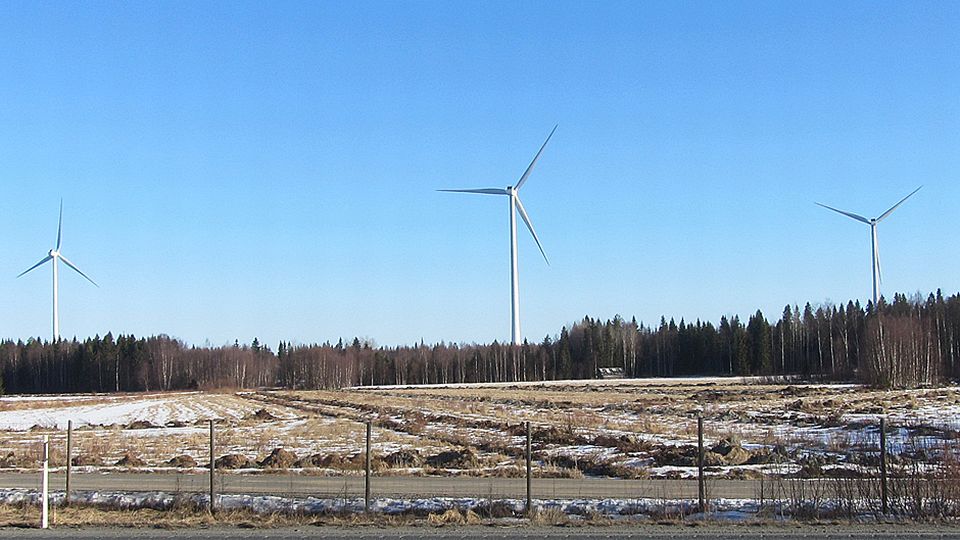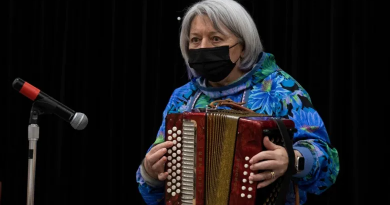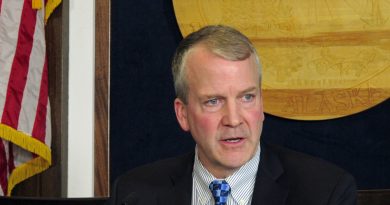Finnish Lapland municipality estimated to have lowered emissions by 121 percent

For the first time, comparable data ranks greenhouse gas emissions for all Finnish municipalities.
According to figures released by the Finnish Environment Institute (SYKE) on Monday, nearly all of Finland’s 310 municipalities lowered their output of climate-warming gases between 2005 and 2017.
In just 16 municipalities, emissions grew or remained steady during the 12-year period.
On average, emissions dropped by 15 percent. Although most local authorities are moving in the right direction, there is still a long way to go to reach the reduction targets, ” says Johannes Lounasheimo, a senior specialist at SYKE.
“Perhaps we have not quite realised yet what major changes are required to achieve these emissions cuts. The challenge is huge, but it is still completely possible to reach them,” he tells Yle.
Wind power offset
There are drastic differences in various municipalities’ emissions cuts. For instance Simo in Finnish Lapland is estimated to have lowered its emissions by 121 percent. That is largely due to active construction of wind turbines in the area.
“Our calculations include a compensation mechanism, whereby wind power production within a municipality is considered to offset its emissions. During this period, wind power capacity grew in Simo,” Lounasheimo explains.
On the other hand, Ilomantsi in North Karelia, far eastern Finland, is listed as expanding its emissions. That is due to the re-starting of a peat-powered pellet factory.
Geographic location has little to do with the ranking. For instance, the municipalities with the highest (Lumparland) and second-lowest per-capita emissions (Lemland) are both located in the autonomous maritime province of Åland.
Lumparland’s high emissions figure is due to the fact that it has a population of only a few hundred people, but is home to a large port whose emissions are considered as part of the municipality’s output.
Local authorities hail project
Despite such apparent anomalies, SYKE believes that the new, uniform calculation method will be useful in the future, as the data will be updated annually.
“This internationally unique calculation system enables the emissions data of individual municipalities to be analysed to satisfy the needs of both the EU and the municipalities. This provides brand new opportunities to support local climate work and monitor the impact of various steering methods all around Finland,” says Professor Jyri Seppälä of SYKE.
The figures have already been helpful, say some local authorities. They include the city of Porvoo, to the east of Helsinki.
“The emissions calculations provided by SYKE strongly steer climate work in Porvoo and other municipalities, and it is important that we have nationally comparable data available. It will be interesting to analyse the results in greater detail,” says the city’s sustainable development expert, Sanna Päivärinta.
The emissions figures have been calculated according to standards set by the Carbon Neutral Municipalities network (Hinku). It is backed by SYKE and the EU as part of a six-year climate project called Towards Carbon Neutral Municipalities and Regions (Canemure).
The calculations aim to eliminate emissions over which an individual municipality has no control, such as industrial fuel use, electricity consumption and waste emissions, as well as road traffic that passes through the area.
SYKE estimates that the largest factors in municipalities’ emissions are road traffic, agriculture, district heating and electricity consumption.
According to Lounasheimo, emissions must still be slashed by 70-80 percent in order for Finland to reach its ambitious goal of carbon neutrality by 2035.
“And that assumes that we maintain our [forest] carbon sinks,” he adds.
Write to Eilís Quinn at eilis.quinn(at)cbc.ca.
Related stories from around the North:
Canada: Renewable energy must be community tailored, Arctic conference hears, Eye on the Arctic
Finland: Few Finns willing to make sacrifices alone for climate, poll finds, Yle News
Norway: Unfazed by youth climate protests, Norwegian gov expands Arctic drilling, The Independent Barents Observer
Russia: Norilsk, Arctic Russia is world’s largest sulfur dioxide emissions hotspot: report, The Independent Barents Observer
Sweden: Local councils in Sweden more interested in climate change preparedness, Radio Sweden
United States: Alaska remote diesel generators win exemption from pollution rule, Alaska Public Media



